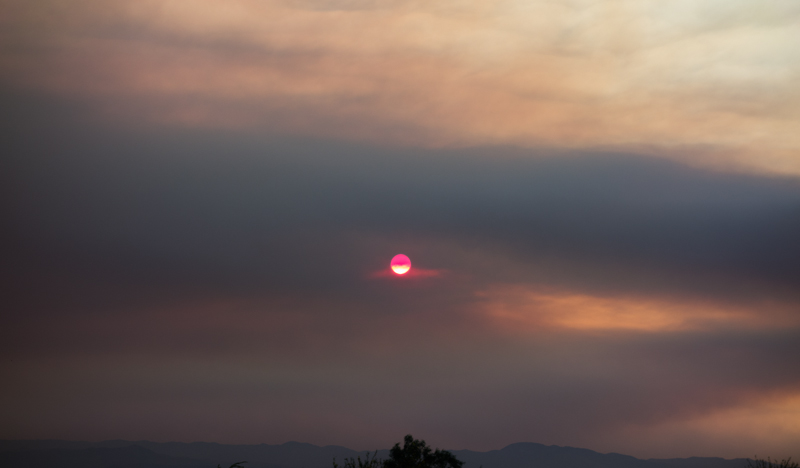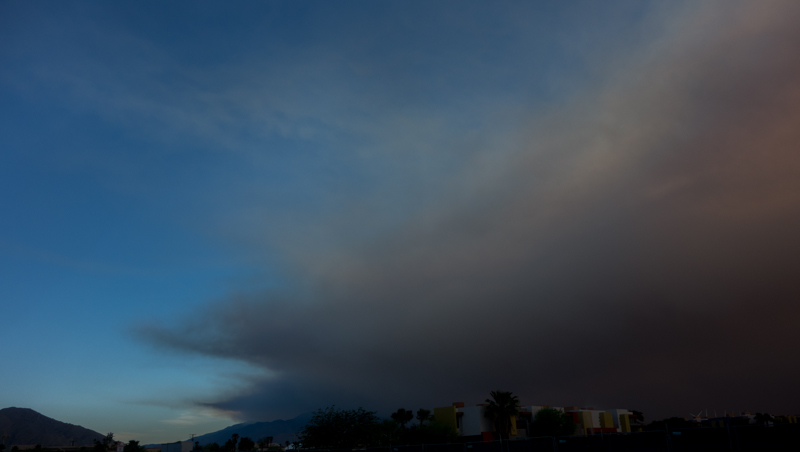
When you are in the forest and see a forest fire, it is disheartening. But wildfires are a natural phenomenon and normally healthy for forests. But there are times when wildfires are destructive and cause irreversible damage. Such is the state of affairs in California. For someone on a long distant backpacking trip of several weeks or months, forest fires are often considered by backpackers as a minor inconvenience. One has to re-route their trip, sometimes walking on roads, until they can get back on the trail. However on a short trip, a forest fire often ends the trip, which happened to me last week when I was forced to turn around and bail when a fire that broke out on Wednesday grew out of control and moved into the San Gorgonio Wilderness. Currently the fire, which is near Big Bear, has consumed 27 square miles and is about 20% contained. Already it is the largest fire in this area in over one hundred years. Smoke from this fire has traveled all the way to Arizona and reportedly is visible in the Grand Canyon.
DROUGHT AND CONSEQUENCES

Most people around the country know that California is going through a multi-year drought. Droughts are cyclical, having come and gone through eons. Some attribute the current drought to man-made climate change, which is an iffy conclusion at best. The fact is: we are in the midst of a severe drought. A byproduct of this is the 2+ million dead pine and fir trees in the southern California Mountains, victims of the bark beetle, which normally bore into old or dying trees. In severe droughts, the beetle kills healthy trees that are weakened by the dry weather and continuing lack of moisture.
MAN MADE CONSEQUENCES
For over 100 years, we have not been allowing most fires to burn in our forests; fires that are actually good for the forest. These fires clear the underbrush and healthy trees can survive them. Years of this fire prevention policy has allowed the forest floor to become choked with brush and small plants, creating ample fuel for potentially hot fires – to the detriment of our forests. All this dry and plentiful ground fuel creates a much hotter than normal fire and the pine and fir trees cannot survive a forest fire, as they normally would.

We are learning that these efforts to protect our forests can often lead to the opposite results.
WHAT CAN WE DO?
I am not going to get into a long dissertation but if you are backpacking, camping, or hiking, make sure you check with the local agencies and FULLY UNDERSTAND AND FOLLOW any special regulations regarding stoves and campfires. Be careful and alert to ensure you do not accidentally start a fire.